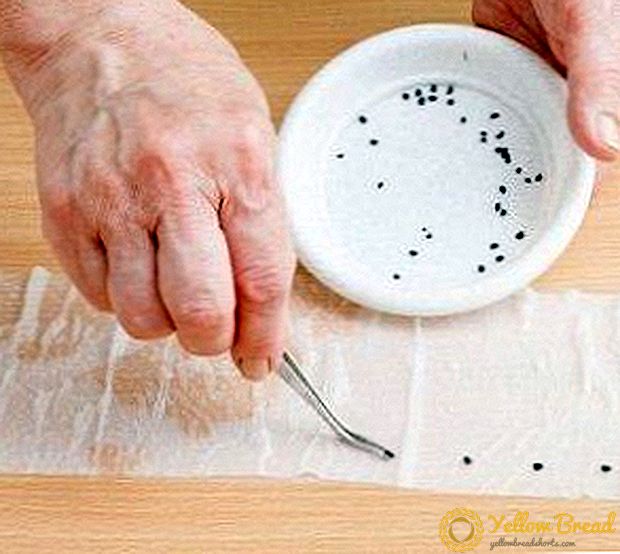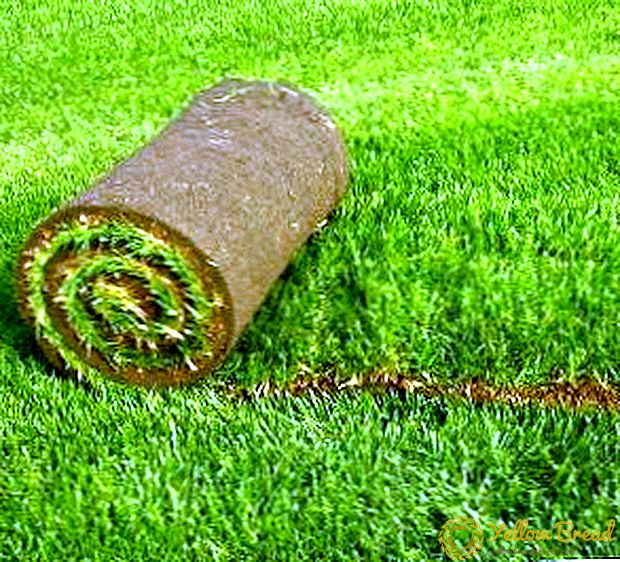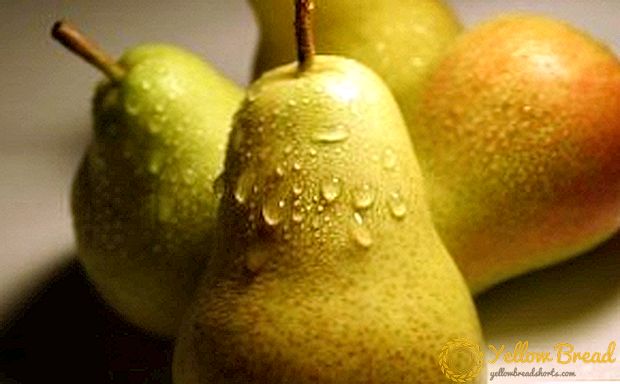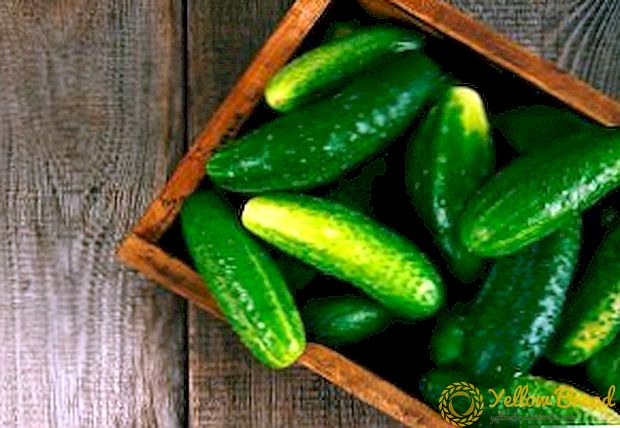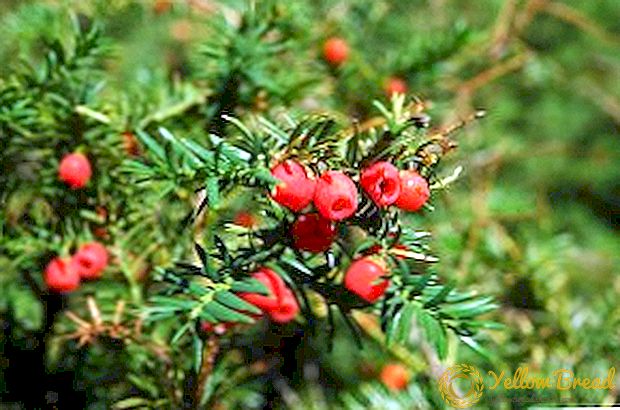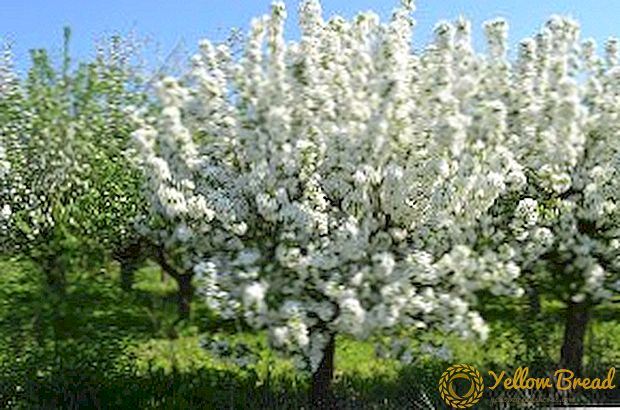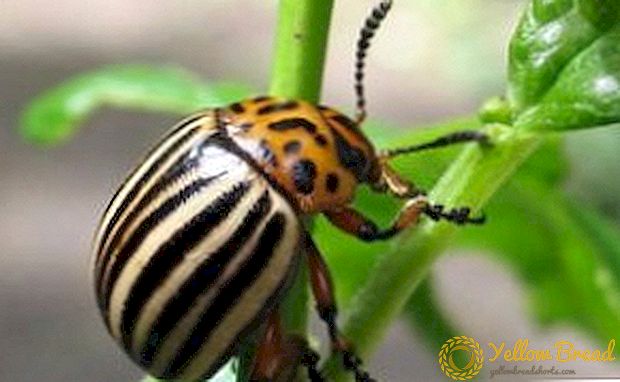 The Colorado beetle (Leptinotarsa decemlineata) belongs to the leaf beetle family, the order beetle. This is one of the most malicious pests of the garden and garden, bringing significant damage.
The Colorado beetle (Leptinotarsa decemlineata) belongs to the leaf beetle family, the order beetle. This is one of the most malicious pests of the garden and garden, bringing significant damage.
- The appearance of the Colorado potato beetle
- Where did the Colorado potato beetle come from
- What does the Colorado beetle eat?
- Reproduction of the Colorado potato beetle
- Life cycle of the colorado potato beetle
- Where and how does the Colorado potato beetle winter
- False Potato Beetle
The appearance of the Colorado potato beetle
Many people know what the Colorado potato beetle looks like - its tight-fitting, yellow-chitinous elytra of orange-yellow color has five black stripes each; This combination is very recognizable in the green garden. Females are slightly larger and heavier than males. The body of the imago is oval, in length can reach from 8 to 15 mm, in width - approximately 7 mm. Abdomen orange color with black spots. The structure of the upper part of the body of the Colorado potato beetle has a convex shape, the bottom - flat. The webbed wings are well developed and allow the beetles to fly long distances.The head of the beetle is much smaller than the body, located almost vertically and slightly retracted, rounded in shape.
 The beetle has three pairs of legs. Thin legs of beetle are weak, with claws for insect movement. The eyes are located on the sides, black, have the shape of a bean. Near the eyes there are antennae, which consist of ten segments.
The beetle has three pairs of legs. Thin legs of beetle are weak, with claws for insect movement. The eyes are located on the sides, black, have the shape of a bean. Near the eyes there are antennae, which consist of ten segments.
The larva of the Colorado potato beetle is about 1.5 cm long, with a small black head. The trunk of the brown larva, which later becomes pale pink, has two rows of dark small dots on the sides.
Pest eggs are bright orange in color; the female lays up to 60 small eggs in one laying.
Where did the Colorado potato beetle come from
The origin of the Colorado potato beetle begins with Mexico, from the north-eastern part of it, from where it spread to the United States. In 1859, the pest caused colossal damage to potato plantations in the state of Colorado, after which it was named the Colorado potato beetle. It is believed that the pest was brought to Europe in the 1870s by cruise ships plying the Atlantic.The beetle successfully adapted to life in France and England and spread throughout the rest of European countries.
In the 1940s, when the Colorado potato beetle first appeared in the USSR, employees of collective farms and quarantine brigades tried to save land from it, but the pest was intensively moving across the entire territory of a huge country. Suitable weather conditions, large crops of the beetle and its larvae, and its fecundity had a favorable effect on the distribution of the harmful insect.  Trying to answer the question of where the Colorado potato beetle came from in Ukraine, many biologists agree that the pest flew in large quantities from the territory of Hungary and then Czechoslovakia on a windy and warm spring, when the air masses contributed to its extensive and rapid spread.
Trying to answer the question of where the Colorado potato beetle came from in Ukraine, many biologists agree that the pest flew in large quantities from the territory of Hungary and then Czechoslovakia on a windy and warm spring, when the air masses contributed to its extensive and rapid spread.
What does the Colorado beetle eat?
The Colorado potato beetle is gluttonous, especially since in the gardens it always grows enough what it eats - solanaceous crops: potatoes, tomato, eggplant, sweet peppers; the pest also eats tobacco, nightshade, woodworm, henbane, physalis and petunia. The larvae and imago feed on young shoots, flowers and leaves of plants, and in autumn time - on potato tubers.Usually the beetle settles in a small area of plantings, eats the ground part of one plant, and then moves to another, and the affected cultures dry out and gradually die. Since the pest actively multiplies and spreads rapidly, and the leaves and stems of plants are eaten by both adults and larvae. The damage from the Colorado potato beetle is huge and can be calculated in hectares of cultivated plantations.
Reproduction of the Colorado potato beetle
 In the spring, three to five days after the emergence of the Colorado beetles on the surface of the soil, the process of their reproduction begins, which lasts until the autumn. Beetles mate, females place eggs in the amount of 20-70 pieces in secluded places on the back of the leaves or in the branching of the shoots. After 7–20 days, the larva hatch from the egg, which then passes through the pupation stage, and at the beginning of summer a young generation of adult pests appears. The larvae that have just appeared from the egg have a length of up to 3 mm and already feed on succulent foliage.The life cycle of this pest will be discussed in more detail in the next paragraph of the article. One female beetle per season can lay up to a thousand eggs.
In the spring, three to five days after the emergence of the Colorado beetles on the surface of the soil, the process of their reproduction begins, which lasts until the autumn. Beetles mate, females place eggs in the amount of 20-70 pieces in secluded places on the back of the leaves or in the branching of the shoots. After 7–20 days, the larva hatch from the egg, which then passes through the pupation stage, and at the beginning of summer a young generation of adult pests appears. The larvae that have just appeared from the egg have a length of up to 3 mm and already feed on succulent foliage.The life cycle of this pest will be discussed in more detail in the next paragraph of the article. One female beetle per season can lay up to a thousand eggs.
The most favorable conditions for reproduction and development of the young generation of the pest are temperatures of + 21 ... +23 ° С and humidity at the level of 70-80%. At temperatures below +15 ° C reproduction does not occur.
Life cycle of the colorado potato beetle
If in the fall the female has had time to fertilize, in the spring immediately after hibernation she will lay eggs, of which after 2-3 weeks larvae appear. A characteristic feature of the development of the larvae of the Colorado potato beetle are four age categories, each of which ends in a molt. In the first stage of age, the gray-colored larva is densely covered with hairs, its body reaches a length of 1.6-2.5 mm, and feeds on the tender flesh of young leaves. In the second stage of age, the larva is slightly pubescent with hairs, its length is 2.5-4.5 mm, it feeds on the soft part of the leaf plate, eating it before skeletization. The third stage of the larva passes in brick color, the body reaches 5-9 mm. The fourth stage of age is the length of the larvae is 10-15 mm, the color is from yellow-orange to yellow-red hue, at this stage the pest is the most voracious before hatching in the imago. 
The food of the larvae of the Colorado potato beetle is very intensive, with the destruction of almost all the foliage of the plant. After two or three weeks, the larva dips 10-15 cm into the soil for pupation. Depending on the temperature of the earth, the larva pupates within 10-18 days. An offspring pupa is orange or pink, its length is about 9 mm and width is 6 mm, after a few hours its color changes to brown. During pupation in the autumn months, the beetle remains to winter in the soil, not crawling to the surface. If the transformation into adult individuals occurs in the spring-summer period, the beetles creep out to the surface.
 In the first 8–21 days of life, the imago actively feeds, storing nutrients that will be useful to it for further settlement and long-distance flights. An adult beetle is able, with the aid of the wind, to travel several tens of kilometers from the place where the larvae hatch from the egg. In addition to hibernation, beetles can reduce activity in the dry or hot period, falling into a long sleep for up to 30 days, after which its activity continues.The life span of the Colorado potato beetle is 2-3 years, during which it periodically falls into a long diapause.
In the first 8–21 days of life, the imago actively feeds, storing nutrients that will be useful to it for further settlement and long-distance flights. An adult beetle is able, with the aid of the wind, to travel several tens of kilometers from the place where the larvae hatch from the egg. In addition to hibernation, beetles can reduce activity in the dry or hot period, falling into a long sleep for up to 30 days, after which its activity continues.The life span of the Colorado potato beetle is 2-3 years, during which it periodically falls into a long diapause.
Where and how does the Colorado potato beetle winter
Where the Colorado potato beetle lives in the winter - this question is of interest to many gardeners who are fighting this tenacious pest. After an adult beetle appears from the pupae in the fall, it remains to winter until the spring in the earth’s thickness. Adult beetles in the autumn are buried in the ground for the winter, and they can survive freezing to -9 ° C. The wintering of the pest takes place in the soil at a depth of 15-30 cm, in the sandy soil the beetle can go deeper to half a meter. A small number of beetle populations can die in severe frosts, but, as a rule, these insects tolerate the winter well, being in a long hibernation. When the soil warms up to 14 ° C and the air temperature is above 15 ° C, the beetles begin to wake from hibernation and gradually creep out to the surface of the earth in search of food.
False Potato Beetle
 Exists in nature false potato beetle (Leptinotarsa juncta), which is slightly smaller than Colorado and differs from it in color. The length of the false beetle usually does not exceed 8 mm, the elytra are painted in alternating stripes of white, black and yellow, the legs are dark in color, and the belly is of a brown shade. The false beetle does not harm agriculture, as it prefers weedy wild plants of the nightshade - Caroline and bittersweet, as well as Physalis. A false beetle does not eat potatoes and does not use its tops for breeding, like other tasty crops for the Colorado potato beetle.
Exists in nature false potato beetle (Leptinotarsa juncta), which is slightly smaller than Colorado and differs from it in color. The length of the false beetle usually does not exceed 8 mm, the elytra are painted in alternating stripes of white, black and yellow, the legs are dark in color, and the belly is of a brown shade. The false beetle does not harm agriculture, as it prefers weedy wild plants of the nightshade - Caroline and bittersweet, as well as Physalis. A false beetle does not eat potatoes and does not use its tops for breeding, like other tasty crops for the Colorado potato beetle.

